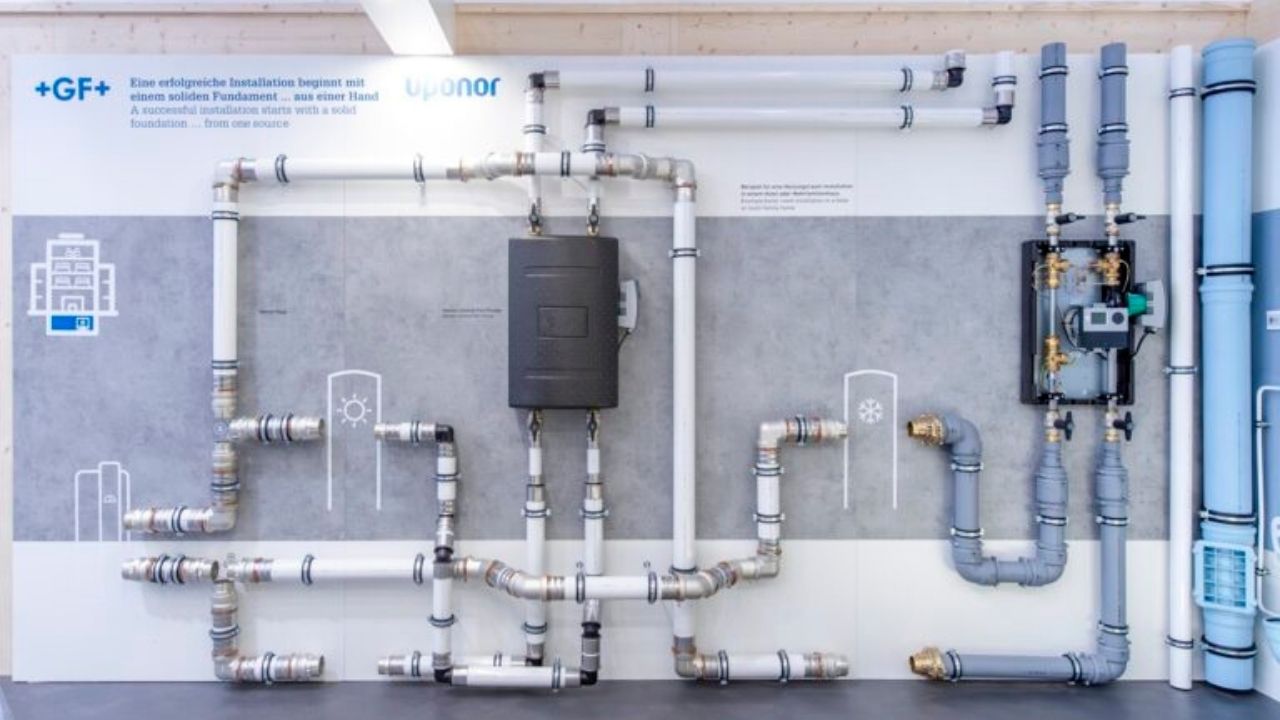Designed for light commercial buildings, EcoMate offers a unique business model with a risk-free contracting service fee based on shared cost savings and no hardware investment required.
Most existing buildings still rely on fossil heating systems, leading to high energy consumption, increased CO2 emissions, and rising operational costs. With stricter environmental regulations, real estate owners face financial risks when their buildings fail to meet new sustainability standards. Meanwhile, traditional Building Management Systems (BMS) come with high upfront and operational costs, limiting their accessibility. “With EcoMate, targeting light commercial buildings, we want to lower this entry barrier. No hardware investment will be needed as sensors and software are provided,” says Torsten Meier, Chief Innovations Officer, GF Building Flow Solutions. “The solution is introduced with a contracting service fee tied to shared cost savings. We are excited to launch EcoMate at ISH 2025, focusing on Germany first, and look forward to further developing the concept in collaboration with real estate and asset managers, as well as building owners.”
Energy status-quo of existing buildings
85% of buildings in the European Union were built in 2000 or earlier and 75% have a poor energy balance. 40 % of the energy consumed in the EU is used in buildings of which about 80% is used for heating, cooling, and hot water. About one third of the EU’s related greenhouse gas emissions (GHG) come from buildings1. In times of climate change this presents the most pressing global challenges. To achieve a fully decarbonized building stock by 2050, the EU has established a legislative framework to boost the energy performance of buildings.
Protecting the environment and increasing real estate value
“If we take Frankfurt as an example, where more than 1,000 buildings such as offices or schools still run fossil heating systems with high energy consumption and CO2 emissions, the energy saving potentials are enormous.”, says Torsten Meier, Chief Innovation Officer, GF Building Flow Solutions. “Apart from the environmental impact, real estate value quickly becomes a financial risk when building emissions are not in line with new rules and regulations. Available energy monitoring and optimization solutions are usually linked to high entry and running cost. Smart solutions to improve existing heating systems are needed. Our answer is GF EcoMate.” The non-invasive, sensor and software-based solution achieves an average of 30% energy savings by leveraging real-time building occupancy insights and weather forecasting for precise energy adjustments. The smart and fast to implement heat source management only requires sensors and software, which are provided at no costs.
Databased real-time monitoring and automated optimization
EcoMate improves heating efficiency by collecting key data points such as supply, return, water, and outdoor temperatures, which are securely uploaded to the EcoMate cloud. Advanced AI algorithms analyze building occupancy patterns and optimize boiler operation based on weather forecasts and the building’s thermal capacity. By integrating a smart outdoor sensor that overrides the existing outdoor sensor reading, EcoMate seamlessly adjusts boiler control for maximum efficiency. Users can monitor performance and track achieved energy savings in real time through an intuitive web interface, ensuring transparency and enhanced cost-effectiveness.
Contracting model without upfront investment
GF EcoMate doesn’t require upfront investments as sensors and software are provided. Fast and easy to install, the cloud-based energy-efficiency service EcoMate fits to all gas heating systems in the market and does not require complex BMS IT infrastructure or invasive installations. Based on a contracting model by sharing the savings without any other fees, EcoMate is transparent and a zero-risk opportunity for customers.
GF EcoMate:
- EcoMate connects sensors, real-time occupancy insights and weather forecast, supporting facility managers
- Based on collected data, the intelligent software optimizes the heating system, saving in average 30% energy and cost (light commercial buildings)
- Reducing CO2 emissions to protect asset value
- Sensors and software provided, no investment required
- Contracting model based on shared cost savings
1 Energy Performance of Buildings Directive (https://energy.ec.europa.eu/topics/energy-efficiency/energy-efficient-buildings/energy-performance-buildings-directive_en)
Source: Georg Fischer AG



